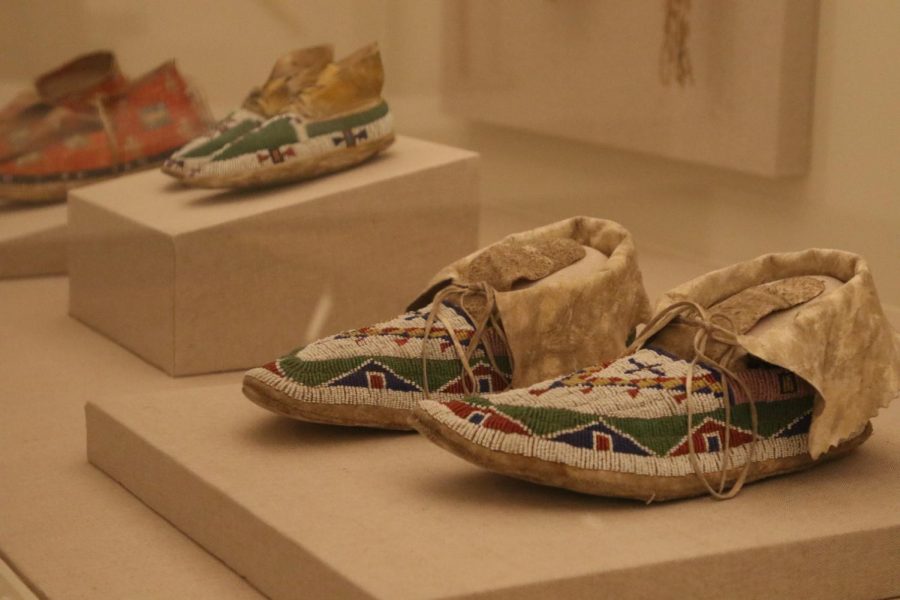Dancing lights celebrate Native American culture
November 14, 2018
Shelbi Gregory, a senior majoring in social work, recently went to the Birmingham Museum of Art for the first time—and she was not the only one.
In a joint venture by various colleges and organizations on campus, 15 students visited the museum last week in celebration of Native American Heritage Month. The centerpiece of their excursion was “Waterline,” an immersive new installation from artist Marianne Nicolson.
Nicolson is a member of the Kwakwaka’wakw Nations of British Columbia, according to the museum. Her work is a tribute to tradition, inspired by soaring thunderbirds, rising arrows, majestic wolves and much more. “Waterline” itself is a glass sculpture, covered in Nicolson’s etchings, containing a light that casts the drawings onto nearby walls. Students who saw the installation in person say that words won’t do it justice.
“I wasn’t sure what to expect by just reading about it, but it absolutely exceeded any expectations I had,” Gregory said.
The students who trekked up to Birmingham to see the piece were able to interact with it for seven minutes, observing the light cascading around the sculpture. Gregory described the experience as “beautiful and peaceful.”
Ebony Chinn, a graduate student in creative writing, agreed wholeheartedly.
“My reaction was a place of meditation and reflection,” Chinn said.
The students were guided in their viewing by Emily Hanna, the museum’s senior curator, who explained that Nicolson meant for those viewing the piece to walk around in its glow, a representation of their complicity in the destruction of the environment. Hanna’s guided tour was an eye-opener for Gregory, who learned about the intricacies of Native American art.
“I didn’t know much about repatriation until the tour through the museum, and I’m so thankful that I could go and learn about and become a voice that can advocate for tribe members trying to reclaim their belongings,” Gregory said.
“Waterline” is not the only Native American-influenced piece on display at the museum. The museum recently acquired “Standing Rock,” a photograph by Zoë Marieh Urness, who participated in the 2016 protest of the Dakota Access Pipeline. In its own collections, the museum also has pottery, blankets, regalia and masks that represent the history and artistic culture of the Native American tradition.
“As someone who is a member of a marginalized group, I understand the importance of representation and cultural memory,” Chinn said. “When I looked at Native American works of art, part of me felt sad and angry. However, another part of me also felt happy knowing that Native American artists are finally getting the recognition they deserve.”
“Waterline” was not the only work of art that caught students’ eyes. Chinn said that she was particularly impressed by the museum’s “Third Space” exhibition, which features over 100 works of art in a variety of mediums. The exhibit’s title is a reference to third space theory, which seeks to explain individual uniquities in a globalized culture. As for Gregory, a pre-Columbian fired clay container in the shape of a cat was among the many pieces that caught her eye.
“Waterline” is on display until November 25 in the Arrington Gallery of the Birmingham Museum of Art. Admission is free.








